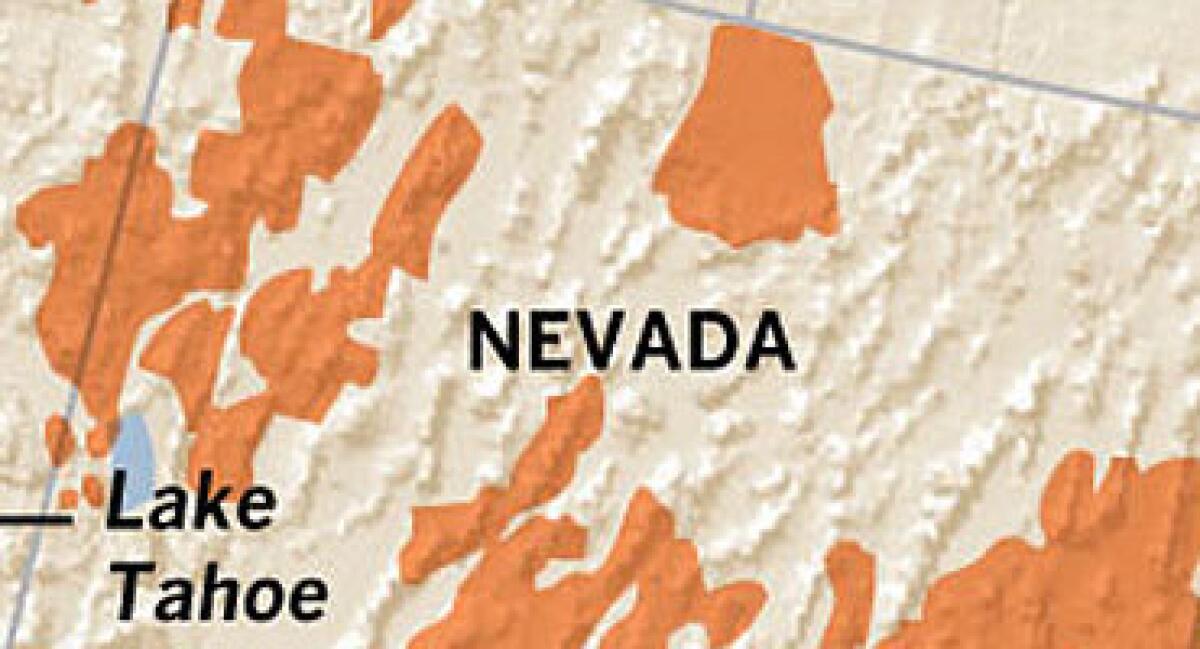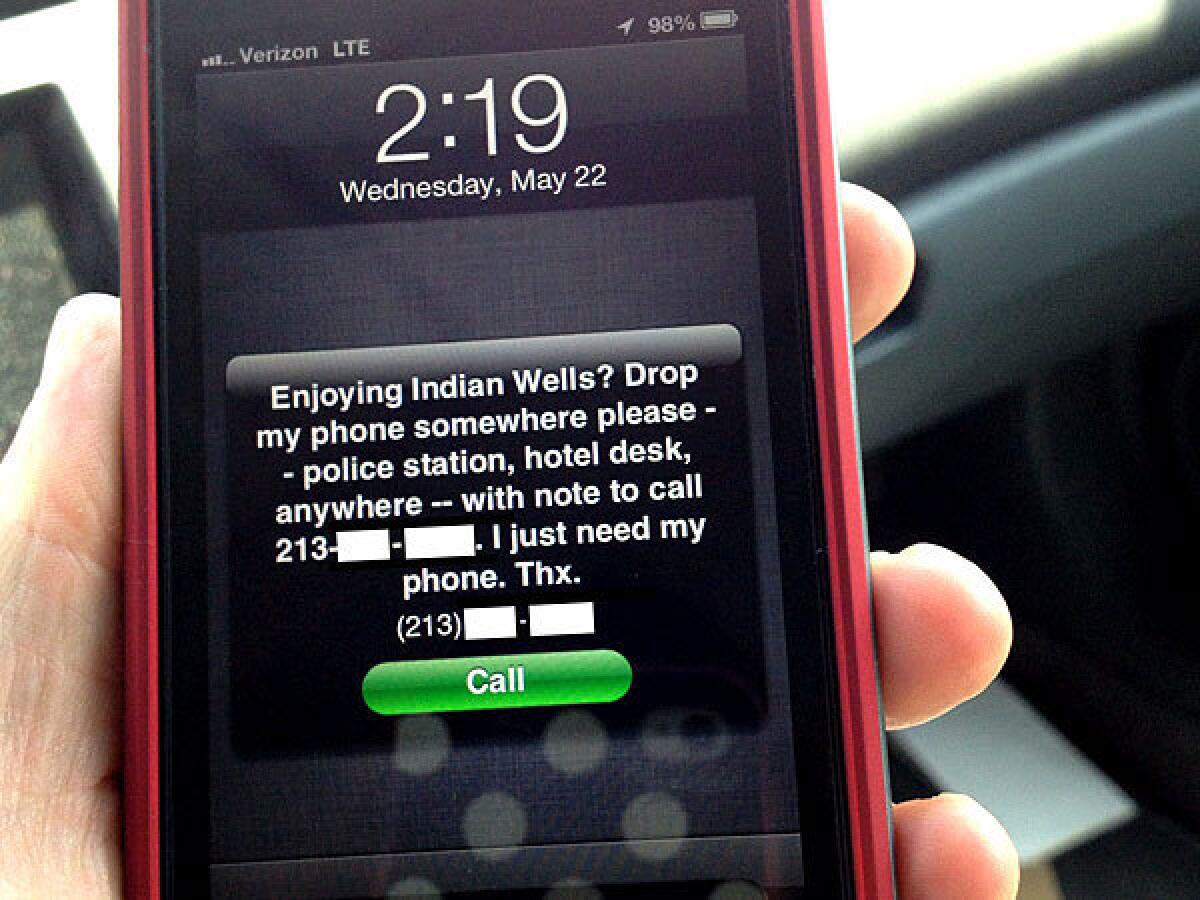Auction sends wild horses to sanctuary -- or slaughter
Rescuers of wild mustangs, checkbooks in hand, duel with the government and ‘kill buyers’ who seek horses for slaughterhouses.
- Share via
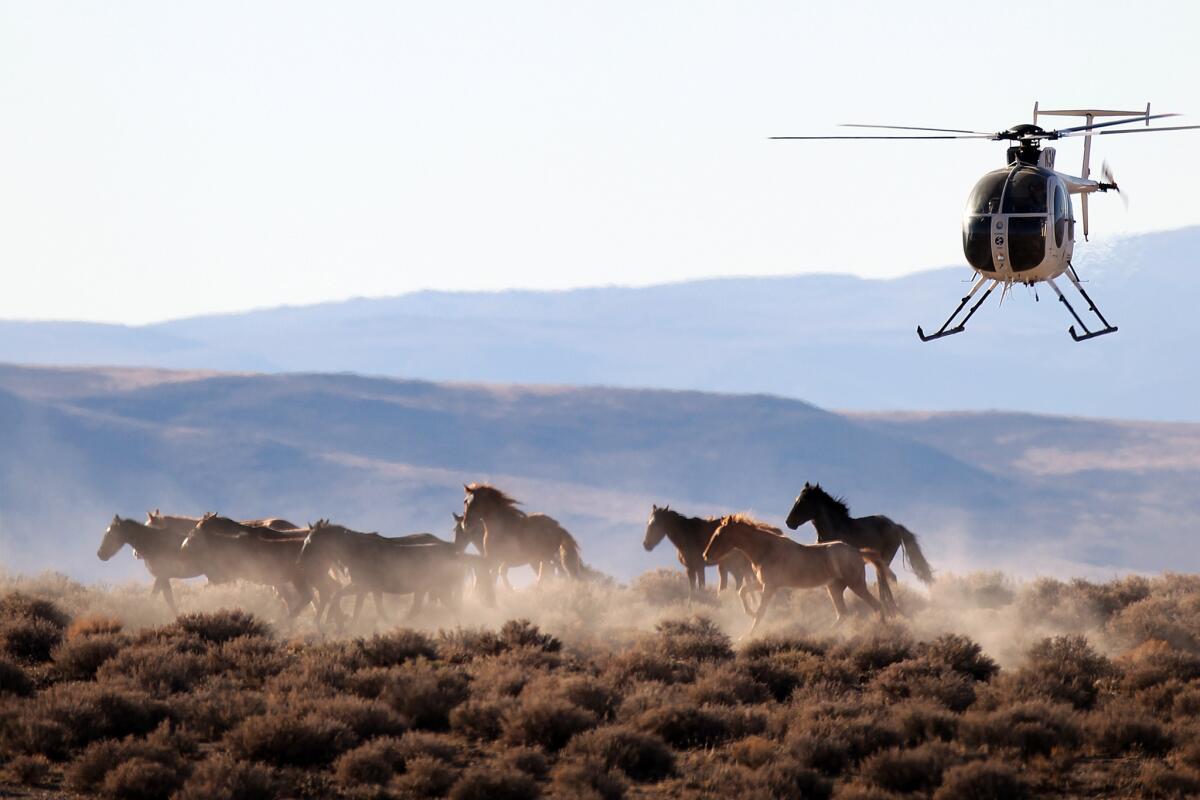
The gate swings open and the wild mustang rushes into the auction pen. Yearling by its side, the big mare paces the muddy floor, neck craning, nostrils flaring. Graceful creatures that have never known saddle or rider are now biddable commodities.
The unluckiest of America's wild horses end up in places like this: a livestock yard in rural Nevada, where potential buyers coolly assess each animal's physique, looking for a deal.
On this day, 23 mustangs that state officials removed from public rangeland outside Reno will have their fates determined in the crescent-shaped bidding theater.
A showdown looms. In the crowd are so-called kill buyers scouting product to ship to a foreign slaughterhouse. Also on hand are animal activists who, checkbook in hand, plan to outbid the kill buyers.
The mood is prison-yard tense, with armed state Department of Agriculture officers looking on. Sally Summers, an activist in Wrangler jeans and hiking boots, suspiciously eyes a well-known kill buyer named Zena Quinlan.
Then the auctioneer begins his racing beat.

The federal Bureau of Land Management says the mustang population is out of control. Activists say the BLM has scapegoated an animal whose poise and dignity make it a symbol of the West.
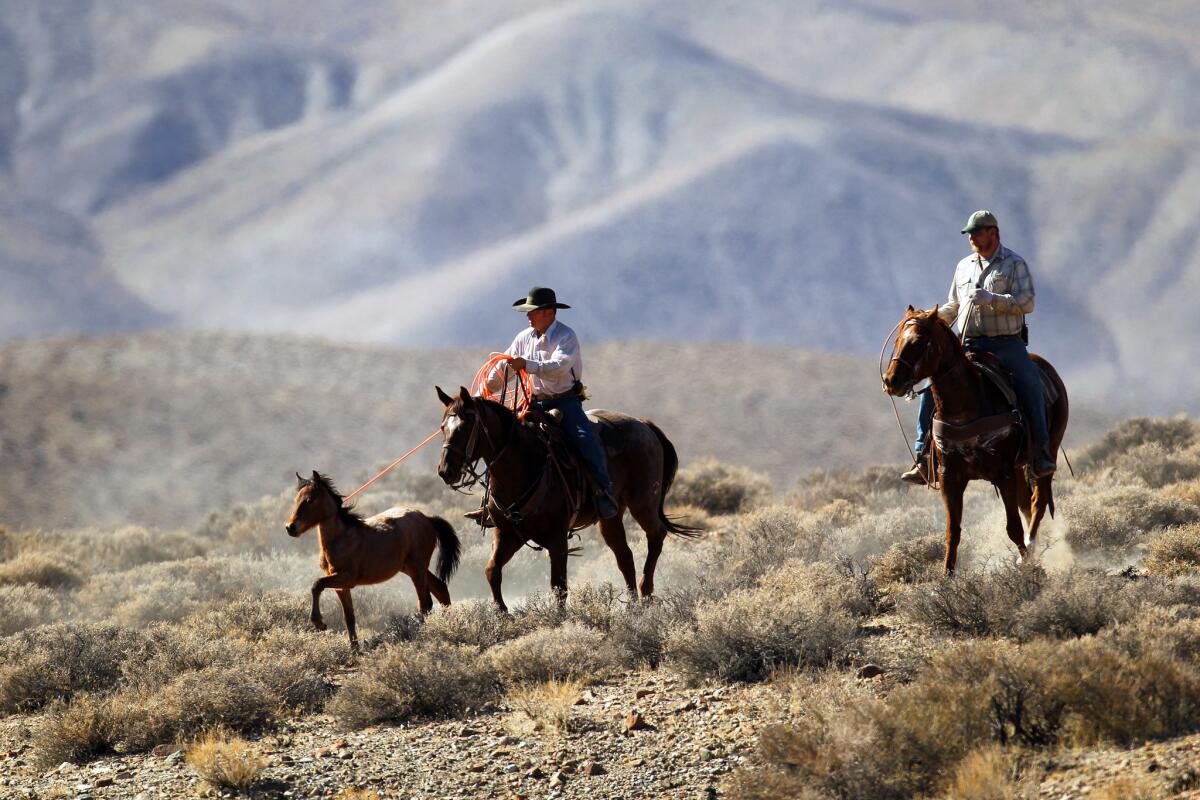
A cowboy working for the Bureau of Land Management lassos a young mustang during a recent roundup. More photos
The two sides disagree on just about everything: on how to stem the growth of mustang herds, whether domestic cattle or wild horses do more damage to rangeland, whether mustangs are a native or invasive species.
Critics say the bureau bends to the interests of ranchers, who for generations have grazed their livestock on public lands leased for below-market cost.
"The agency removes horses, but you don't see them taking cattle off the range," said Bob Edwards, a former BLM Wild Horse and Burro Program official.
Officials counter that it's the animal activists who are inflexible. When the BLM proposed gelding more males, activists sued, saying it robbed stallions of their spirit.
Each year the BLM rounds up thousands of mustangs — pintos and bays, roans and grays — and trucks them off to be readied for adoption or sent to fenced-in Midwestern tracts, where ranchers are paid by the government to house the horses for the rest of their lives.
The BLM estimates that 49,000 wild horses are held in such facilities. In 2012, holding costs of $42 million devoured more than half of the BLM's $72-million budget for its horse and burro program.
About 31,500 remain on the range. On June 5, a panel from the National Academy of Sciences' National Research Council blasted the bureau's emphasis on roundups as "expensive and unproductive." The report called for more birth control — a vaccine for mares, chemical vasectomies for males — and urged the agency to show greater transparency in how it operates.

In the bidding theater, the auctioneer continues his rat-a-tat patter.
The animal advocates sit nervously amid a dozen men in blue jeans, boots and sweat-stained cowboy hats.
Summers, who founded Horse Power, a Reno nonprofit whose mission is to protect the wild horses, looks across the stands to see whether Quinlan, the kill buyer, joins the action.
Quinlan's arms are crossed. She's not bidding.
A stocky cowboy sipping a beer in the top row takes control of the action. With a flip of a finger, Jack Payne signals a bid and raises the price on a mare and foal.

The Bureau of Land Management holds mustangs in temporary corrals before hauling them away. More photos
Usually, such a pair might fetch $300. But the price is already higher. As Laura Bell, representing the horse activists, raises the stakes by $25, the cowboy ups it $100.
Finally the bidding ends. Bell takes the pair for $600.
Activists are stunned. At this rate, they fear, they won't be able to save all these horses.
Led from the ring by a wrangler, the mare calls out, an entreaty answered by another mustang waiting in a corral just outside the auction floor.

The fight for America's mustangs dates back to 1950, when a Reno secretary named Velma Johnston spotted blood dripping from a truck loaded with wild horses bound for slaughter.
Eventually known as Wild Horse Annie, Johnston spearheaded a movement to protect wild horses and burros. Soon even Hollywood got involved: The 1961 film "The Misfits," with Clark Gable and Marilyn Monroe, portrayed a Nevada cowboy who becomes disgusted with brutal wild horse roundups.

Sally Summers searches for mustangs in the Yerington, Nev., area. She founded Horse Power, a Reno nonprofit that works to protect wild horses and burros. More photos
He doesn't want these horses! He's just driving up prices! That's illegal!"— Sally Summers, wild horse activist
A decade later, the Wild Free-Roaming Horse and Burro Act directed the BLM to maintain a "natural ecological balance" among horses, wildlife and cattle. While signing the measure, President Nixon cited the "indomitable spirit and sheer energy of a mustang running free."
In 2004, Conrad Burns, a Republican senator from Montana, inserted a rider into an appropriations bill that permitted the sale of older or unadoptable horses. The law was signed by President George W. Bush, opening the doors for mustang slaughter.
In a corrective measure, Congress has passed appropriations language every year since 2005 to prohibit the BLM from selling horses to anyone who intends to have them killed.
But wild horses taken from Native American reservations or state-managed lands — like the 23 up for auction in Fallon — receive no such protection.

At the auction house, Bell and Payne continue their bidding war. Another pair, a gray mare and her foal, go for $1,050. With another flip of his finger, Payne raises the price on a horse by $200.
"This is crazy," Bell says.
She claims one mustang after another, but at a steep price.
"We're getting smoked," says Summers. She's gotten a tip that the aggressive bidder is the owner of the auction house. She runs down the stairs toward the auctioneer.
"He doesn't want these horses!" she yells. "He's just driving up prices! That's illegal!"
The auctioneer looks up. After an awkward silence, he allows the bidding to continue and another horse is led into the ring.

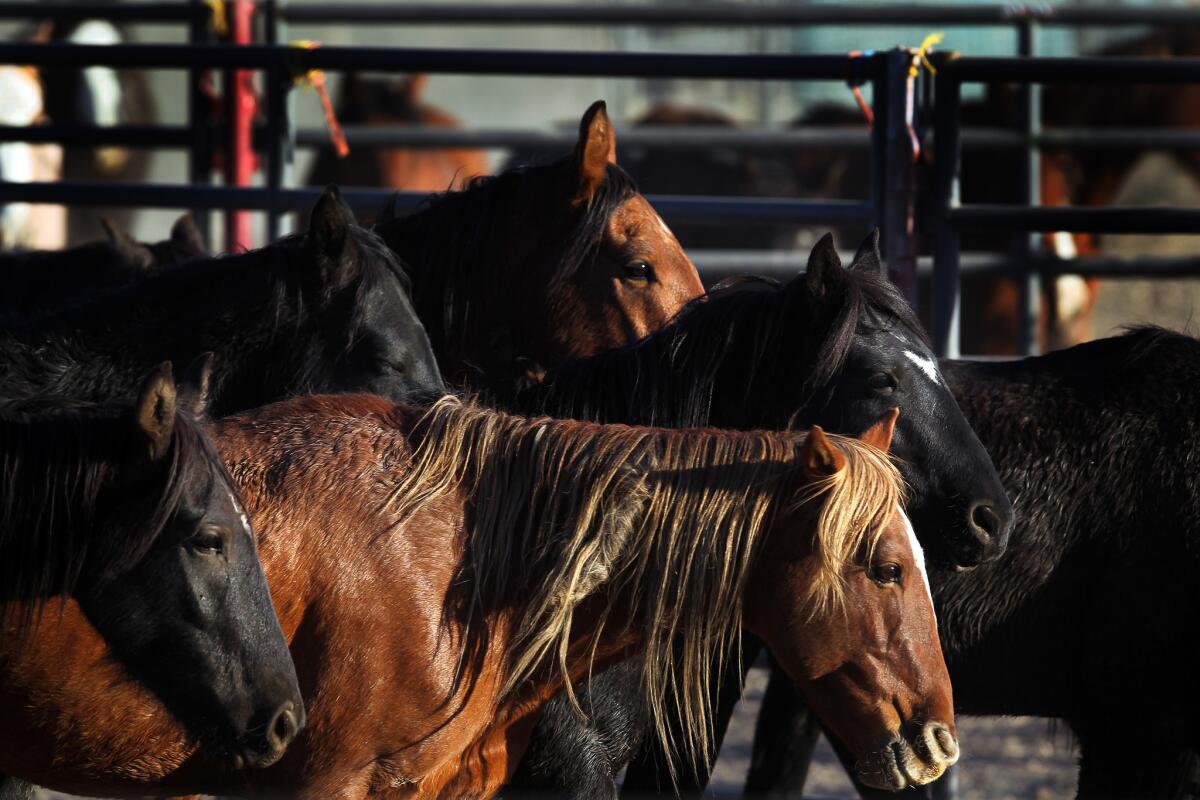
Groups trying to protect horses and burros in the wild say the Bureau of Land Management is managing the populations toward extinction with its aggressive roundups. More photos
A dozen mustang activists silently file out of the auction house. The evening's take: nineteen adult horses and four foals. No mustangs will go to slaughter. But the price astounds them.
Shannon Windle, president of the Hidden Valley Wild Horse Protection Fund, signs a check for $11,997.40, which includes taxes. In coming weeks, the activists will return to save scores of other mustangs, at a cost of $50,000.
Windle will later complain to state officials that auction house owner Payne illegally drove up prices on the mustangs, animals that activists call the wild ones. Officials will reply that, as a licensed bidder, Payne can buy horses at his own auction house.
"If those horses weren't worth it, those ladies shouldn't have bid that high," Payne said. "But if they don't get 'em, I do. And I've got a home for 'em — a slaughterhouse in Mexico."
Summers and her colleagues load up horses that whinny and huff into the night air. She'll deliver three to an activist's ranch outside Reno. As she drives her trailer west, toward the same stretch of highway where Wild Horse Annie first saw the bloody trailer, she's tired but philosophical.
Sometimes, she laments, it feels like the activists have made little progress.
"But tonight, we saved 23 horses that are not going to slaughter," she said. "And that's a victory."
More great reads
Old guard, young blood clash in Salinas' halls of power

There were bad things done in Salinas in the past, and we haven't healed from that."
Sign up for Essential California
The most important California stories and recommendations in your inbox every morning.
You may occasionally receive promotional content from the Los Angeles Times.
